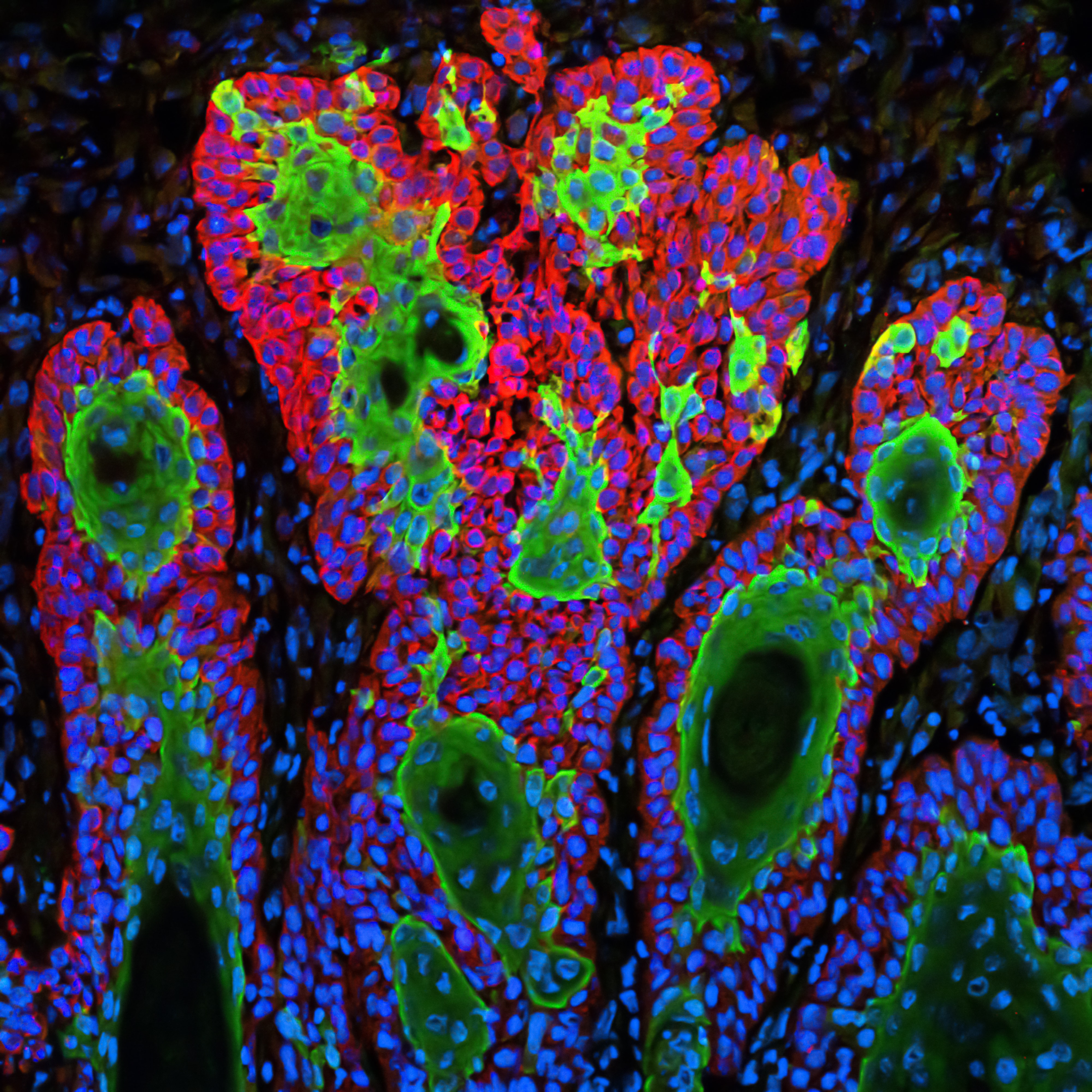5 Types of Skin Cancer in Dogs – Helpful Information You Need To Know of Causes, Types, Symptoms

The most common cancer type that worries dog owners is skin cancer in dogs.
Rightly so because every dog owner is concerned about their pet’s life, and the word cancer does not exactly bring heaps of comfort and joy either.
Dogs can get all types of growths on their skin. These growths may include lipomas, which are just benign tumors made up of fat cells, and sebaceous cysts.
It is important to remember that not all types of growths on a dog’s skin are tumors.
On the contrary, some of these growths have a tendency to turn malignant (cancerous). Therefore, it is important for dog owners to be able to pick up the earliest signs of any malignant growth.
Here is everything you need to know about dog skin cancer, its causes, and also its treatment options.
Skin Cancer in Dogs: Causes, Types, Symptoms
Yes, dog skin cancers are a real thing. Dogs can get skin cancers just like humans and their diagnosis and treatment isn’t much different as well.
The reason why dogs develop skin cancer more than any other type of cancer may be linked to the fact that their skin is constantly exposed to the environment. Click here to learn more about other types of cancers in dogs.
Environmental factors, albeit important, are not the only cause of skin cancer in dogs. Genetic factors also play a vital role in the development of skin tumors in canines.
A brief summary of some of the major causes of skin cancer in dogs is given below.
What causes skin cancer in dogs?
Genetic factors play a bigger role in developing cancers in dogs than environmental factors. in fact, most cancers in dogs develop due to mutations in either the tumor suppressor genes (genes responsible for stopping tumor growth) or the protooncogenes (pro-tumor genes).
Environmental factors can also cause malignant tumor growth in canines. Some of the most common environmental factors which are linked to an increased risk of malignant tumors in dogs include:
- sun exposure
- chemical exposure
- hormonal abnormalities
- and even viruses.
5 Types of Skin Cancer in Dogs

Skin tumor development can start from multiple cell lines, which is why multiple forms of dog skin cancers exist.
Some of the most common skin tumors in dogs include:
1. Malignant melanomaS
Malignant melanomas are caused by an overgrowth in the pigment layer of the epithelium. There is often an increased concentration of the pigment melanin in these tumors, which is why they appear dark-colored.
These tumors have a raised, lumpy, often ulcerated appearance. They can also present as toe swellings when the cancerous growth involves nail beds.
Malignant melanoma can appear on the lips, mouth, and even nail beds of dogs. Dog breeds like Miniature and Scottish Terriers are most commonly predisposed to developing malignant melanomas.
2. Mast cell tumors
Mast cell tumors originate from mast cells – cells that are responsible for the release of histamine in allergic reactions.
Mast cell tumor is the most common type of skin cancer in dogs.
Mast cell tumors release histamine leading to symptoms like itching and sneezing. Some dogs with mast cell tumors can also develop stomach ulcers from excessive histamine release.
Tumors originating from malignant mast cells are common in Boston Terriers and Pugs.
3. Squamous cell carcinoma
Squamous cell carcinoma in dogs is also very common. Researchers believe that while sun exposure definitely has a big role to play in its development, squamous cell carcinomas often develop due to mutated genes.
Generally, older dogs, especially Bloodhounds and Basset Hounds, are more prone to developing squamous cell carcinomas.
Squamous cell carcinomas are more common on the legs, the belly, and the rear of dogs because these parts are exposed to the sun more often.
4. Histiocytic cell tumors
Histiocytic cell tumors are common in dogs under the age of 3. Dog breeds like Boxers, Boston Terriers, and Chinese Shar-Pei are more prone to developing these skin cancers.
5. Fibrosarcoma
Fibrosarcoma is a type of connective tissue carcinoma. This tumor type readily develops in middle-aged dogs.
Fibrosarcoma is usually slow growing and rarely metastasizes. However, some dogs can develop an aggressive type of fibrosarcoma, a high-grade sarcoma, which can be dangerous.
Frequently Asked Questions (FAQs)
What are the Symptoms of Skin Cancer in Dogs?
Skin cancer in dogs may present with multiple symptoms or none at all. Because most cancers are usually slow growing, often no symptoms appear until the disease is already reached a late stage.
However, skin cancers are relatively easier to spot since they are visible on the dog’s skin.
The most common symptom of skin cancer in dogs is usually a restricted range of motion, especially if the lumps appear on limbs or the neck of the canine.
Do not confuse the lumps with dog skin tags, since they’re mostly harmless, and can be removed at home.
Other symptoms may include a characteristic wound that fails to heal even after medication, constant pain, lethargy, fatigue, and an overall decrease in the activity of the canine.
Other symptoms may or may not appear depending on whether or not cancer has reached a dog’s internal organs.
How is Dog Skin Cancer Diagnosed?
We’ve already looked at some of the most commonly diagnosed types of skin cancer in dogs. But how do veterinarians differentiate between tumor types and make an accurate diagnosis?
It is important to diagnose tumors in dogs at early stages. Two main diagnostic procedures that help achieve an accurate diagnosis are described below.
Tissue biopsy is a procedure in which a sample of cancerous tissue is taken from a dog’s skin. This sample is then examined by pathologists under a microscope to identify tumor cells.
Fine needle aspiration is another procedure that helps diagnose skin cancer in dogs. This procedure is much less invasive and involves taking a small sample with a biopsy needle. The sample cells are then examined under a microscope.
How Long Can Dogs Live with Skin Cancer?
Cancer prognosis, even in dogs, is dependent on several factors, including metastasis to lymph nodes, the state of a dog’s immune system, and also the type of tumor present as well as the tumor location.
Not all skin cancer types, however, are equally dangerous. Some growths have a higher risk of turning malignant and metastasizing (spreading to other areas), while others remain benign and rarely cause any problems.
Squamous cell carcinomas, malignant melanomas, and fibrosarcoma have poor prognoses in dogs. Dogs with these tumors live up to 1-3 years max if not treated properly.
Other tumor types are not as aggressive and, if caught early, can be treated successfully.
Is Dog Skin Cancer Treatable?
Most dog tumors can be treated successfully if caught early. With proper treatment and care, dogs may become just as healthy as they were before acquiring the tumor.
Treatment options for skin tumors in dogs are similar to those in humans. Radiation therapy, chemotherapy, and surgical removal of big lumps are common treatment options.
Is There Any Vaccine to Prevent Cancer in Dogs?
In theory, vaccines may be able to prevent cancers in dogs by training their immune system to recognize tumor cells early. However, at the moment, no anti-cancer vaccines yet exist for dogs.
How to Prevent Common Skin Tumors in Dogs?
Cancer prevention in dogs is all about limiting the risk factors that lead to the development of tumors. This includes limiting sun exposure, maintaining a healthy diet and lifestyle, and regular medical checkups. You can also learn more about how to take care of your dog’s skin and keep it healthy.
Images from Unsplash.com
